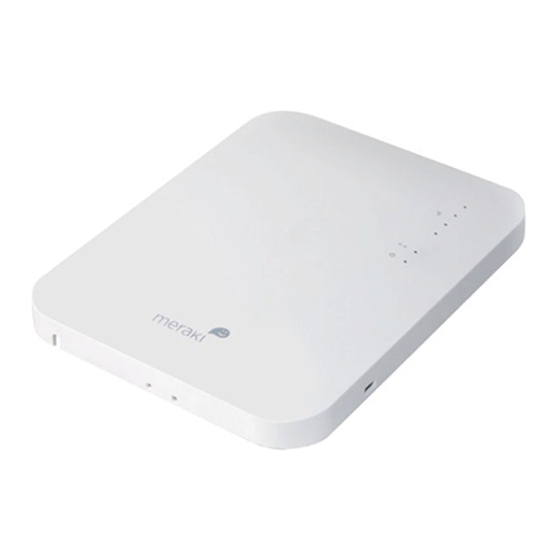Cisco Meraki MR12 Manuel de démarrage rapide - Page 2
Parcourez en ligne ou téléchargez le pdf Manuel de démarrage rapide pour {nom_de_la_catégorie} Cisco Meraki MR12. Cisco Meraki MR12 3 pages. Assigning static ip addresses

Behavior differences between primary and secondary ports
Primary (Ethernet 0)
This interface is capable of receiving power using PoE and can be assigned a static IP address. It is also capable of 10/100/1000Mbps speeds. It is intended for
connecting the MR12 to the rest of the network.
Secondary (Ethernet 1)
This interface can only receive an IP from DHCP and is not able to receive power using PoE. It is only capable of 10/100 speeds. It is still able to connect to the
Meraki Cloud Controller if the Primary connection is down, but is intended for used by a wired client. To allow use by a wired client, please refer to our
documentation regarding
Extending the LAN with a Wireless Mesh Link.
Determining which port is being used
The simplest way to determine which port is being used is to physically look at the device, and refer to the diagrams above. If you are not near the device, the
easiest way to determine if the secondary port is being used is by looking at the AP Dashboard. Navigate to Monitor > Access points and click the AP in
question. Look under Status for LAN IP #. If the # = 1, then the AP is connected using the primary port. If # = 2, then the AP is connected using its secondary
port.
Assigning a static IP
A static IP can be assigned to the AP's primary interface in two ways.
Dashboard
1. In Dashboard, go to Monitor > Access points and select the AP in question.
2. Click the Edit icon.
2
